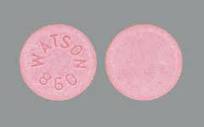There are so many cases of hypertension. Some may be caused by stress, others by diet and lifestyle. Bottom line is that it should be immediately corrected or treated so that complications may be avoided. Hypertension can be very dangerous because it targets the blood vessels. If the pressure in your blood vessels is not right, then circulation is compromised. Oxygenation then becomes insufficient and from there, other disorders may come about.
A myriad of ways can prevent or correct hypertension. Primarily, a healthy lifestyle and diet should be practiced everyday. When you go and see your doctor, this will be monitored, together with the prescribed medications that you should take. One of the medications formulated to target hypertension is Lisinopril 10 mg. This is also prescribed for people who have congestive heart failure, diabetic kidney disease with elevated blood pressure, and for those who have already survived a myocardial infarction. Lisinopril 10 mg is also known as angiotensin-converting enzyme inhibitor that relaxes your blood vessels. As a result, blood pressure goes down. Here are some of the facts about Lisinopril 10 mg that you may want to discuss with your doctor:
1. Before taking
 Taking Lisinopril 10 mg should be given much thought. During your initial consultation with your doctor, you should make sure that you inform your doctor if you are more than three months in your pregnancy, if you have allergies to the ingredients of Lisinopril 10 mg, if you have been dehydrated because of a previous condition such as diarrhea, if you have a reduction in blood flow brought about by ischemia or a cerebrovascular disease, if you already had a heart attack, if you have impaired or transplanted kidneys, if your had surgery done to your respiratory system, if you are immunocomprimised, and if you have diabetes.
Taking Lisinopril 10 mg should be given much thought. During your initial consultation with your doctor, you should make sure that you inform your doctor if you are more than three months in your pregnancy, if you have allergies to the ingredients of Lisinopril 10 mg, if you have been dehydrated because of a previous condition such as diarrhea, if you have a reduction in blood flow brought about by ischemia or a cerebrovascular disease, if you already had a heart attack, if you have impaired or transplanted kidneys, if your had surgery done to your respiratory system, if you are immunocomprimised, and if you have diabetes.
2. Interactions
 Interactions to Lisinopril 10 mg may happen if you take in the medication that is either prescribed or just bought over-the-counter such as potassium sparing diuretics, diuretics, anesthetics, lithium, NSAIDs, medications that weaken the immune system, antipsychotics, antidepressants, muscle relaxants, anti-Diabetics, and glyceryl trinitrate.
Interactions to Lisinopril 10 mg may happen if you take in the medication that is either prescribed or just bought over-the-counter such as potassium sparing diuretics, diuretics, anesthetics, lithium, NSAIDs, medications that weaken the immune system, antipsychotics, antidepressants, muscle relaxants, anti-Diabetics, and glyceryl trinitrate.
3. Dosage considerations
 Lisinopril 10 mg is prescribed to adults initially. This is usually under supervision by their doctors, who may increase their dosage to 20 mg to 80 mg as maintenance everyday. The diuretics that you may be taking would have to stop once Lisinopril 10 mg is started. This is also given to those who have just had a heart attack after 2 consecutive doses of 5 mg. After that, Lisinopril 10 mg will be given as maintenance dose for six weeks everyday. For diabetics with hypertension, Lisinopril 10 mg is given up to 20 mg daily.
Lisinopril 10 mg is prescribed to adults initially. This is usually under supervision by their doctors, who may increase their dosage to 20 mg to 80 mg as maintenance everyday. The diuretics that you may be taking would have to stop once Lisinopril 10 mg is started. This is also given to those who have just had a heart attack after 2 consecutive doses of 5 mg. After that, Lisinopril 10 mg will be given as maintenance dose for six weeks everyday. For diabetics with hypertension, Lisinopril 10 mg is given up to 20 mg daily.
4. Precautions
 You have to let your doctor know if you are pregnant if you are taking Lisinopril 10 mg. Another medication will be prescribed to you. This medication should not be taken if you are pregnant for more than 3 months because of the teratogenic effects. Lisinopril 10 mg should also be stopped during breastfeeding especially when the baby is still a neonate or if the baby was born prematurely. You may experience exhaustion, confusion, and dizziness so you have to make sure that you’re okay  before you operate machinery or drive your car. You should also tell your doctor that you are taking Lisinopril 10 mg if you are about to have an operation.
You have to let your doctor know if you are pregnant if you are taking Lisinopril 10 mg. Another medication will be prescribed to you. This medication should not be taken if you are pregnant for more than 3 months because of the teratogenic effects. Lisinopril 10 mg should also be stopped during breastfeeding especially when the baby is still a neonate or if the baby was born prematurely. You may experience exhaustion, confusion, and dizziness so you have to make sure that you’re okay  before you operate machinery or drive your car. You should also tell your doctor that you are taking Lisinopril 10 mg if you are about to have an operation.
5. Side effects
 Common side effects are also expected from taking Lisinopril 10 mg. You may experience dizziness, very low blood pressure, diarrhea, coughs, impaired function of the kidney, and headaches. Some side effects that occur on occasion are mood changes, tingling sensations, sleep disorders, disturbances in taste, indigestion, palpitations, increased heart rate, numbness, Reynaud’s phenomenon, reduced sexual potency (men), weakness, blood urea elevation, itchiness, and rashes. You should immediately consult your physician for  proper guidance and treatment.
Common side effects are also expected from taking Lisinopril 10 mg. You may experience dizziness, very low blood pressure, diarrhea, coughs, impaired function of the kidney, and headaches. Some side effects that occur on occasion are mood changes, tingling sensations, sleep disorders, disturbances in taste, indigestion, palpitations, increased heart rate, numbness, Reynaud’s phenomenon, reduced sexual potency (men), weakness, blood urea elevation, itchiness, and rashes. You should immediately consult your physician for  proper guidance and treatment.
6. Appearance
 You should take note of the different appearances of the various Lisinopril tablets per dosage. The 2.5 milligram tablets are biconvex, white, and round. The 5 milligram tablets are flat, round, and white. Lisinopril 10 mg tablets are biconvex, round, and light pink. The 20 milligram tablets are biconvex, round, and pink. Every pack that you buy is comprised of 28 tablets.
You should take note of the different appearances of the various Lisinopril tablets per dosage. The 2.5 milligram tablets are biconvex, white, and round. The 5 milligram tablets are flat, round, and white. Lisinopril 10 mg tablets are biconvex, round, and light pink. The 20 milligram tablets are biconvex, round, and pink. Every pack that you buy is comprised of 28 tablets.
When you take Lisinopril 10 mg, see to it that you are under constant supervision by your physician. You should avoid taking potassium supplements, salt substitutes, and alcoholic beverages. You should not miss your appointments and laboratory test schedules for your liver, kidneys, and blood pressure. Hypertension is a medical condition that you could correct yourself. Just be vigilant enough to change your lifestyle and eating habits. It may be hard at first, but eventually, you will get a hang of the positive changes and reap the life-changing results.
